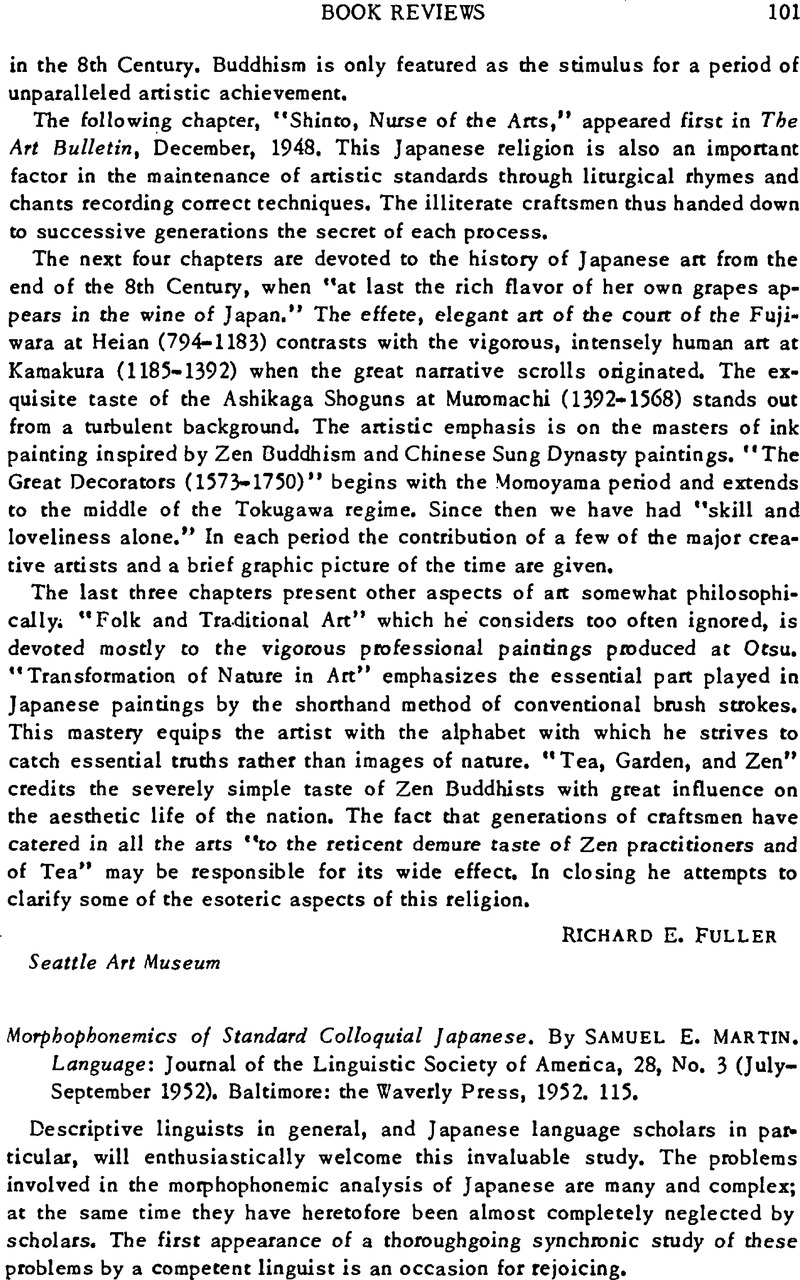No CrossRef data available.
Article contents
Morphophonemics of Standard Colloquial Japanese. By Samuel E. Martin. Language: Journal of the Linguistic Society of America, 28, No. 3 (July–September 1952). Baltimore: the Waverly Press, 1952. 115.
Published online by Cambridge University Press: 23 March 2011
Abstract

- Type
- Book Reviews
- Information
- Copyright
- Copyright © Association for Asian Studies, Inc. 1953
References
1 Examples are cited in the author's phonemic orthography. Morpheme boundaries are indicated within a word by a period (.).
2 I. Inflection, JAOS 66:97–109; II. Syntax, Language 22:200–48; III. Derivation of Inflected Words, JAOS 66:304–15 (all 1946); and IV. Phonemics, Language 26:86–125 (1950).
3 Henry Holt and Co., 1946, 2 v.
4 “Studies in Colloquial Japanese,” I; III.
5 “Studies in Colloquial Japanese,” 11:200–05.
6 E.g., tabe.sas.are.tar-tabe.sase.rare.ta ‘was made to eat’; yom.as.are.ta∼yom, ase.rare.ta ‘was made to read.’ See Bloch, “Studies,” 111:310; Bloch and Jorden, Spoken Japanese 2:656–60.




